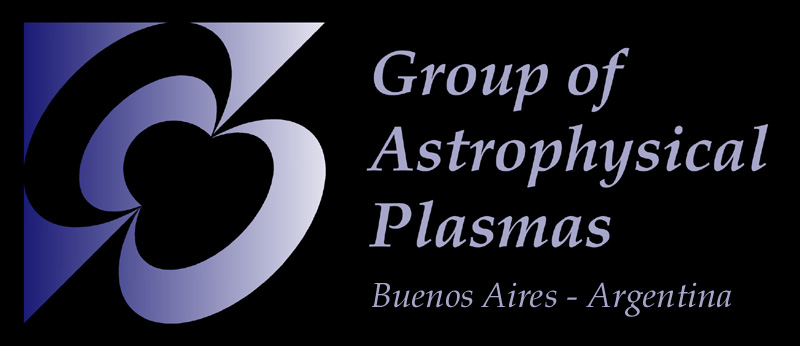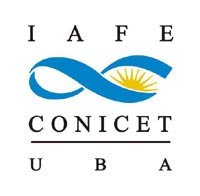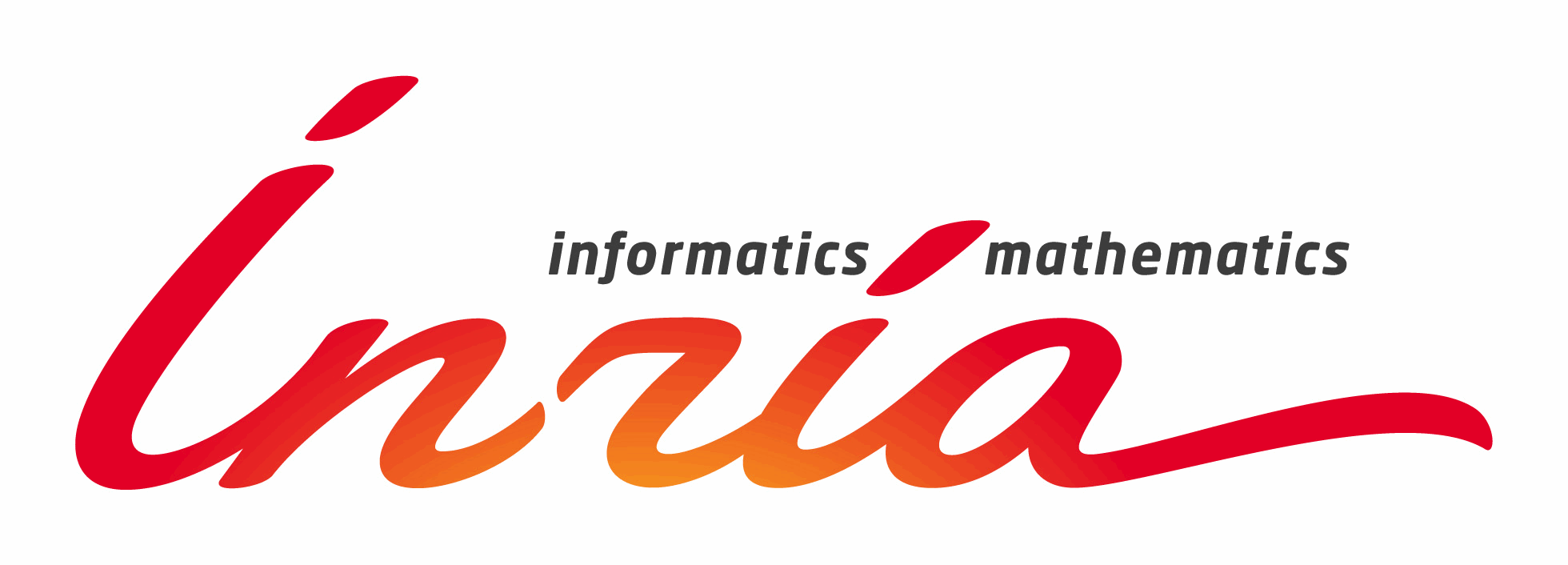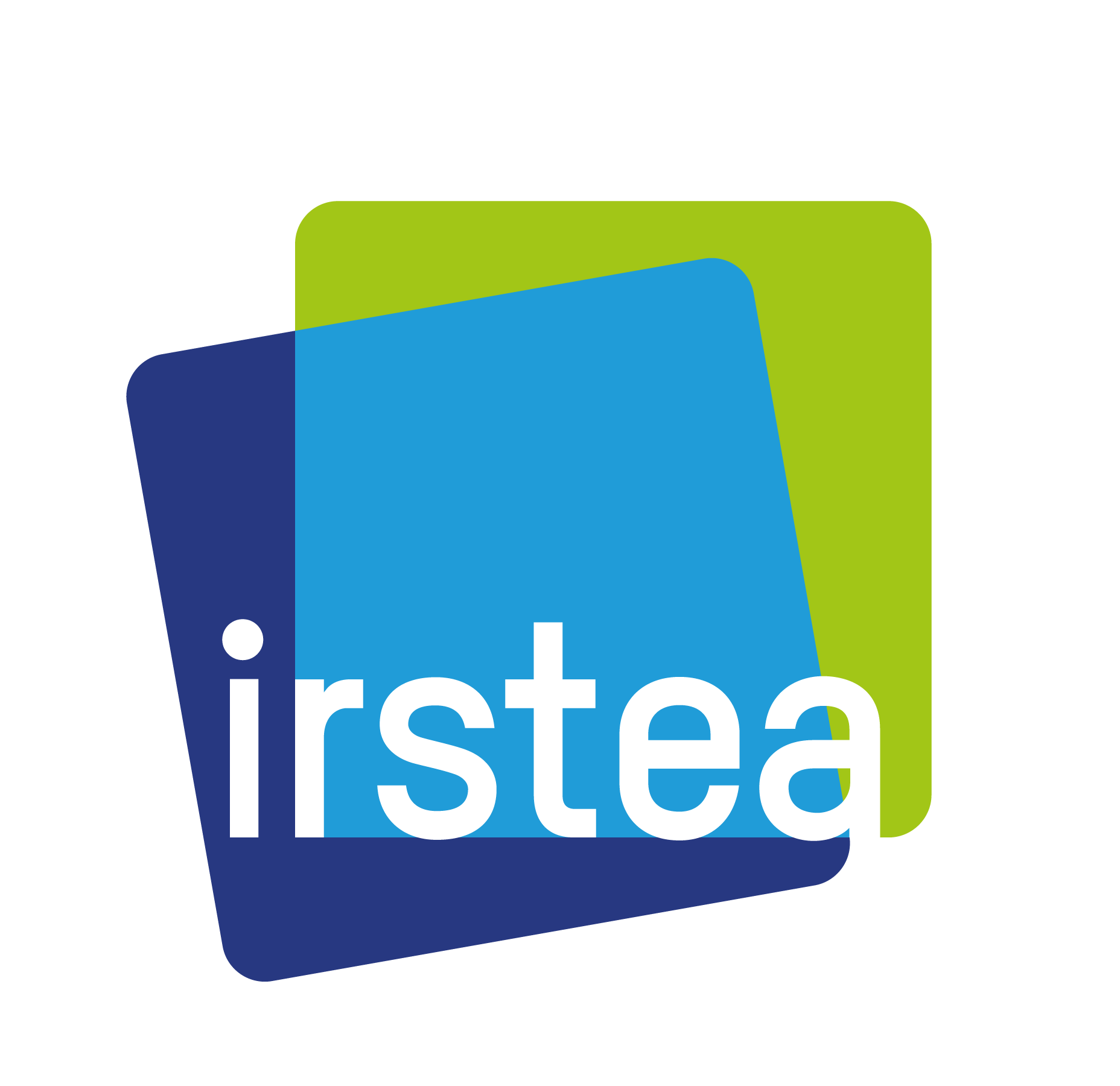On going works and perspectives
Huracan research works - 2011
During this year we have continued the exploration of the studies attached to the two main axis of the Huracan associated team. We briefly describe those works below.
Axis 1: Visual servoing for flow control
The first goal of our works was to clearly show the benefit of using visual measurements against traditional approaches based on shear stress measurements [Tatsambon and Collewet, 2011a; Tatsambon et al., 2011c; Tatsambon and Collewet, 2011d; Tatsambon and Collewet, 2011e]. This work has been done during the Roméo Tatsambon Fomena post-doc. To do that, we focus on a simple flow, the plane Poiseuille flow when blowing and suction is considered as actuation. We then compared the traditional approaches with our vision-based approach by using a LQR control law as proposed by the control flow community. In particular, we showed that those methods suffer from limited observations, from noisy measurements and from the initialization process involved in the observer required to estimate the flow state. In contrast, we incorporate dense velocity fields measurements to build an observer-free closed-loop control law. This approach is formally proven to be of great improvements for the control of this flow in comparison with existing control approaches [Tatsambon and Collewet, 2011f]. A demo of this work is available here.
Otherwise, we have continued our works on the assimilation of proper orthogonal decomposition of velocity fields in order to construct reduced order dynamical model that fits well experimental or numerical data. A Weak and strong constraint assimilation strategies have been investigated for the estimation of the parameters of the dynamics system and its initial condition. The first one assumes that the dynamics is defined up to an unknown forcing function whereas the second relies on a dynamics without any forcing condition. These strategies have been assessed on a Large eddies simulation and on experimental measurement of a wake behind a cylinder at Reynolds 3900. Both strategies have their own advantages and drawbacks and both improve state of the art methods. We have also shown that both strategies are related to two different simple nonlinear Galerkin projections. This works has been finalized and is in revision in the Journal of Computational Physics, see [Artana et al., 2012]. A web page demo of this study is available here.
Alternatively to this study we have also explored a method that combines Proper Orthogonal Decomposition with a spectral technique to analyze and extract reduced order models of flows from time resolved data of velocity fields. This methodology is specifically adapted to flows with quasi periodic orbits in the phase space. The technique is particularly suited to cases requiring a discretization with a high spatial and temporal resolution. The proposed analysis enables to decompose the flow dynamics into modes that oscillate at a single frequency. For each modes an energy content and a spatial structure can be put in correspondence. This approach has been assessed for a wake flow behind a cylinder at Reynolds number 3900. A brief description of the technique is available here. This work has been recently submitted to the Theoretical and Computational Fluid Dynamics journal, see [Cammilieri et al., 2012].
Axis 2: Coupling large scale simulation and image data for the analysis of geophysical flows
Within the PhD of Pierre Dérian, we have devised proper scale-space representations for multi-scale estimation of turbulent flows from images. The decomposition of motion field on a wavelets basis provides an efficient framework to estimate motion at different scales from images, while explicitly constraining the regularity of the solution. In this perspective, we have defined a family of optic-flow spatial regularization functions of various orders by simply varying the vanishing moments of the wavelets used in the decomposition. Moreover, fractal behaviors of the motion field increments have also been introduced as prior models for regularization. Indeed, decomposing motion on a wavelet basis provides an efficient and elegant way to constrain the solution to be self-similar. This estimator has been tested on a sequence of experimental 2D turbulent flow of soap film visualized through a Schlieren technique. A data model suited to such a visualization has been also assessed. This work has been mainly initiated during the two month's stay of Pierre Dérian in Buenos-Aires in October-November 2010. The statistical assessment of the technique is still currently on going.
During the post-doctoral position of A. Gronskis we have worked on optimal control techniques for the reconstruction of fluid flows from noisy observations. In this work we focused on an assimilation technique allowing to estimate the flow initial condition together with the inflow conditions on the image boundaries. This technique has been developed first for a 2D case and we plan to extend it in 3D from a small set of planar velocity measurements. We also intend to further adapt the technique to the estimation from image data of subgrid terms of large eddies simulation. This study has been published in a conference volume [Gronskis et al., 2011] and a journal article is in preparation. A web page demo is also available here.
Huracan research works - 2012
For the third year of this project we continued along the lines of studies proposed in our work program. All the research issues exposed below are investigated in closed collaboration between the University of Buenos Aires and the Fluminance group.
Axis 1: Visual servoing for flow control
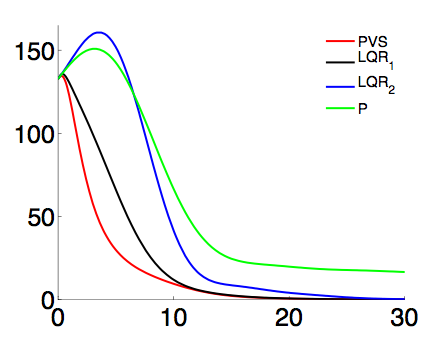
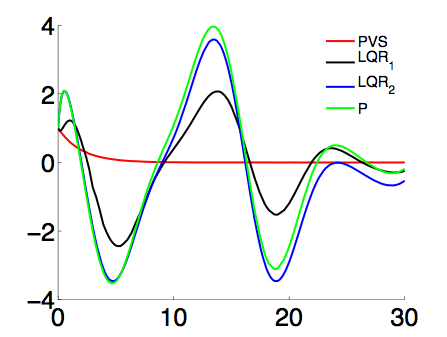 During the post-doc of Roméo Tatsambon Fomena we proved that our vision-based approach overcomes the traditional approaches. Nevertheless, to compare our method with the literature, we used a traditional control law, the LQR control law. However, since visual measurements are used, we can fully exploit the capabilities of visual servoing techniques by designing a more efficient control law than the LQR one. This has been done this year in the context of Xuan-Quy Dao's thesis. We have validated our approach to the problem of minimizing the drag of the 2D plane Poiseuille flow. An important issue was also to ensure that, during the process of drag reduction, the kinetic energy density will not grow. This is of great importance since it is well known that the controlled flow may become turbulent when this kinetic energy density is growing. To cope with this problem we have proposed to design a control law based on partitioned visual servo control [Dao and Collewet, 2011; Dao and Collewet, 2012a; Dao and Collewet, 2012b; Dao and Collewet, 2012c]. Indeed, following this way, we are able to simultaneously minimize the drag AND the kinetic energy density in contrast to the existing approaches as can be seen on the figures plotting the drag and kinetic energy density (our approach is named "PVS", the drag is depicted on the left figure). We have also explored an approach based on eigenstructure placement to ensure a strict decreasing of the kinetic energy density.
During the post-doc of Roméo Tatsambon Fomena we proved that our vision-based approach overcomes the traditional approaches. Nevertheless, to compare our method with the literature, we used a traditional control law, the LQR control law. However, since visual measurements are used, we can fully exploit the capabilities of visual servoing techniques by designing a more efficient control law than the LQR one. This has been done this year in the context of Xuan-Quy Dao's thesis. We have validated our approach to the problem of minimizing the drag of the 2D plane Poiseuille flow. An important issue was also to ensure that, during the process of drag reduction, the kinetic energy density will not grow. This is of great importance since it is well known that the controlled flow may become turbulent when this kinetic energy density is growing. To cope with this problem we have proposed to design a control law based on partitioned visual servo control [Dao and Collewet, 2011; Dao and Collewet, 2012a; Dao and Collewet, 2012b; Dao and Collewet, 2012c]. Indeed, following this way, we are able to simultaneously minimize the drag AND the kinetic energy density in contrast to the existing approaches as can be seen on the figures plotting the drag and kinetic energy density (our approach is named "PVS", the drag is depicted on the left figure). We have also explored an approach based on eigenstructure placement to ensure a strict decreasing of the kinetic energy density.
Another important issue concerns the flow we studied. Indeed, like all the paper involved in the closed-loop control of the plane Poiseuille flow, temporal perturbations has been considered. However, to avoid an infinite channel, a conceptual model have been proposed more than 10 years ago. This "conceptual flow" is used as a benchmark to validate several control schemes. Unfortunately, it is almost impossible to build an experimental setup based on this model. Instead of that, we have considered this year spatial perturbations of a flow behind a step. This work is performed in the context of the LIA Lab (PhD thesis of Nicolas Gautier from ESCPI).
We have also worked on a closed loop flow control system based on the image intensity of a set of probes (selected points of the image). The visualized intensity represents here the local concentration of a passive tracer (associated for instance to the injection of smoke filaments in a wind tunnel experiment). The prototypical wake flow of a cylinder with plasma actuators on its surface was chosen for the experimental control setup. This experiment has been also developed as a numerical benchmark for assessment purpose. Numerical Data has been generated meshing the domain and using a DNS (code Saturne). For the closed loop paradigm, we relied on AutoRegressive with eXogenous input (ARX) model. This model allowed us to control the plasma actuators to limit the cylinder drag from the passive tracer concentration. After a learning period of the model, we have proposed a Generalized Predictive Controller (GPC) to minimize the vector state in a predictive horizon by using the electric forcing. The controller has been integrated inside the Saturne code enabling hence to compute the new state attained as a consequence of the forcing. Different scenarios of changes in the inflow conditions have been considered to try to test the ability of the control to react to different conditions.
We have also pursued our efforts on the study of reduced order models defined from the Koopman spectral analysis of proper orthogonal decomposition of experimental flow velocity fields. This study has been assessed on a wake flow behind a cylinder at Reynolds number 3900. The technique proposed enabled us to design stable reduced dynamical models allowing modelling very accurately a long series of data. The technique is particularly appropriate for complex flows configurations requiring visualisation at fine spatial and temporal resolutions. The proposed analysis enables to decompose complex flow dynamics into modes oscillating at a single frequency. These modes are associated with different energy levels and spatial structures and reveals thus characteristic structures involved at a given frequency. This work has been investigated through a fruitful collaboration with the LIMSI and the LIA PMF. It has been recently submitted to the journal "Theoretical and Computational Fluid Dynamics".
Axis 2: Coupling large scale simulation and image data for the analysis of geophysical flows
This year we have worked along several directions. The different axes of work are listed hereafter.
Stochastic fluid flows dynamics under uncertainty
In this research axis we aim at devising stochastic Eulerian expression for the description of fluid flow evolution laws incorporating uncertainty on the fluid particles location. Such an uncertainty modelled through the introduction of a random term allows taking account of approximations or truncation effects performed within the dynamics analytical constitution steps. This includes for instance the modelling of unresolved scales interaction in large eddies simulation (LES) or in Reynolds average numerical simulation (RANS), but also uncertainties attached to non-uniform grid discretization. This model enables an original large scale formulation of the flow dynamics in which the effect of small scales are formalized through the definition of a random fields modelling the uncertainties we have on the flow. We aim at using such formalization within image based data assimilation framework and to derive appropriate stochastic versions of geophysical flow dynamical modelling.
Image based variational assimilation for the simulation of unknown inflow condition
In this axis of work we have continued the study initiated with A. Gronskis on variational assimilation for measurements guided simulation of experimental flows. In this issue we aim at reconstructing the flow without knowing precisely the inflow conditions. In this issue the flow initial conditions and the inflow conditions constitute the control variables of the assimilation and their values are estimated from time resolved 2D image sequences visualizing the flow on a set of 2D plans enlightened with laser sheets. This work has been assessed on various quasi-2D configurations of wake flows at low Reynolds number. An article has been submitted for publication at the Journal of Computational Physics.
Along the same line of study we have started to investigate the 3D case. The goal consists here to reconstruct a 3D flow from a set of simultaneous time resolved 2D images of planar sections of the 3D volume. This work is mainly conducted within the PhD of Cordelia Robinson. The development of the variational assimilation code has been initiated within a collaboration with A. Gronskis and S. Laizé (lecturer, Imperial College, UK) author of the Navier-Stokes simulation code on which we rely.
Huracan research perspectives - 2013
Axis 1: Visual servoing for flow control
The extension of POD-Koopman reduced order model to flow control activities constitutes one of our objectives. We plan to go ahead along this line to include in the representation basis the forcing effect. Also we would like to explore possibilities of model reduction based on symmetry analysis. The LFD of the UBA together with the LIMSI is working on this topic in the context of the LIA PMF for biofluid flows analysis and we plan to integrate those efforts for flow control issues. This study corresponds to the Stic-Amsud project "Physics based modeling of voice production" recently submitted by D. Sciamarella and in which we are associated.
We also plan to design a reduced order dynamic model where the control signal is explicitly taken into account so that a control low can be derived. More precisely, we plan to design a reduced model according to the literature of automatic control and next to adapt it in the context of fluid flow control. Our idea is to design the reduced model according to a particular objective for which it will be used (the minimization of the drag or the kinetic energy for example). However, an important problem with the reduced models described in the literature is their small validity domain. To cope with this problem we will propose a robust adaptive control law based on on-line parameters identification strategies. This work will be done in the context of the post-doctoral position of T. Airimitoaie (2013 INRIA CORDIS grant). We will validate this approach in the case of the control of an unsteady wake flow behind a cylinder and compare this approach with the current works of UBA. This will require a nonlinear code to simulate the "true" controlled flow and to correctly validate our control scheme. This code will be provided by the UBA. In this study, as proposed by UBA, we will also consider the luminance as visual features. Of course, since the analytic relation between the variation of the control signal and the variation of the visual features required to build the control law seems to be out of reach, a reduced dynamic parametric model is a good candidate to control such a system.
We plan to continue our studies on closed loop flow control through passive tracer concentrations. We plan in particular to enhance the numerical benchmark we have developed and to extended the experimental realizations. Two prototype flows are going to be considered: wake flows and shear layers. A PHD thesis in cotutelle with the UBA on this subject is expected to begin in the second half of 2013. We also expect to validate the works of T. Airimitoaie on this experimental setup.
In parallel, we will pursue our theoretical works on the Plane Poiseuille flow. Our idea is to show to the control flow community that using more degrees of controlled freedom greatly improves the behavior of the closed loop system. This can be seen as an extension of our work concerning the eigenstructure placement approach. We also plan to validate this control schemes on simulations based on a DNS solver (a direct numerical solver of the Navier-Stokes equations by considering boundary control).
Our last goal is to validate our visual servoing approaches on another experimental setup where spatial perturbations are still considered. This experimental setup is currently in progress at ESPCI. This work is performed in the context of N. Gautier's PhD thesis.
Axis 2: Coupling large scale simulation and image data for the analysis of geophysical flows
Next year we intend to continue the studies started this year on variational image assimilation technique for the numerical reconstruction of 3D experimental flows. We plan also to extend the works we have done on the modelling of Navier Stokes under location uncertainty to large-scale models of geophysical flows. Beyond the study of large-scale dynamics with various uncertainty error models, we aim here at devising schemes enabling incorporating image data for the estimation of subgrid models. An accurate modelling of such a term is essential for Large Eddies Simulation as it models all the non resolved motion scales and their interactions with the resolved scales. In this study we aim also at exploring variational assimilation strategies based on ensemble of realizations. These techniques proposed recently in the meteorological community have the advantage of not requiring the modelling of an adjoint operator of the dynamics. Two PhD students funded by the University of Rennes I and IRSTEA respectively will perform these studies.
As for the works on techniques for the estimation of reduced order dynamics, we have the intention to pursue our efforts on the study of spectral-POD techniques. For the moment, the technique has been used only for model reduction of experimental wake flows. We would like to evaluate its performances with respect to the formulation of subgrid models. We plan here to undertake analysis of POD-Koopman modes for 2D turbulent flows produced in soap films to inspire (corroborate) the models. We wish also to assess its ability to reconstruct the stable components of geophysical flows. The incorporation of such reduced models within data assimilation of geophysical flows will be also explored.
